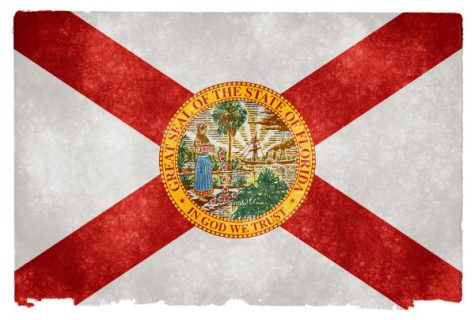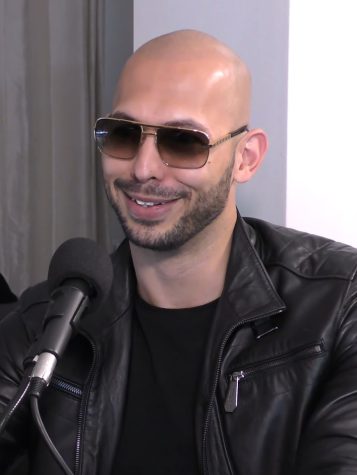Opinion: ‘Framing Britney Spears’ falls short of exposé
Britney Spears New York Times documentary resurfaces old trauma.

“Best HD Britney Spears facebook cover” by Tatiana_0000 is licensed under CC BY 2.0
Pop star Britney Spears dominated the headlines in the late 90’s and early 2000’s. A new look at how the media covered her exposes the “toxic” paparazzi culture of the time.
Since the age of 11, pop superstar Britney Spears has been under the public microscope, having every move made into headlines. Now, more than 20 years after her first single, a new episode from the documentary anthology series “The New York Times Presents” has thrust her name back into the spotlight. The episode “Framing Britney Spears” delves into the origin of the Free Britney movement and the unfortunate sequence of events that lead to her father’s conservatorship over her.
This episode sparked an outcry on Twitter and revitalized interest in the topics of celebrity mistreatment, invasive media and mental health. Though, the real effect of this episode is far from helpful, even stooping to the same level of journalism and insensitivity it criticizes itself.
It doesn’t take long to see where the problems begin with this documentary. The New York Times is conducting interviews with its own journalists, paparazzi photographers, and the partners, lawyers and friends of Spears without sharing any insight from Britney Spears herself. Much of the show exhibits how difficult it was for Spears to take control of the narrative, and yet the documentary itself doesn’t allow her voice to be heard.
Spears’ father Jamie Spears is also a hot topic. The idea that he has created a conservatorship that has made a prisoner of his daughter, both personally and career wise permeates the show. Again, his perspective and thoughts are missing. Viewers are shown an outside look into a matter that can only be judged from the inside. Without quotes from Spears herself, her life is again being publicly manipulated without her input.
How the Free Britney movement was covered also shows a bias in presentation from creators of the series. The entire basis of the movement is formed around what outside viewers think is going on behind the scenes, and yet the show presents it all as fact. Video clips of Spears at concerts and marketing spots are voiced over by people sharing their opinion on what was really going on.
At Spears’ announcement of her new tour in Vegas, a few journalists covering the event commented on how they thought she should have done more to promote the launch. Using some other people’s opinions doesn’t provide insight into Britney’s actions. The video clips themselves don’t show anything unusual, however the audience is being told how to view particular events.
The interviewees themselves stated that they didn’t speak much to Spears’ father and aren’t in on the loop about her conservatorship or what it entails. Most of the evidence requires the audience to read between the lines and come up with a solution that has no real base in facts. This can be especially seen in the closing statements shown before the credits. It is said that Britney Spears was asked to be interviewed for the show but “it is unclear if she received the request.”
By wording it this way, it appears that Spears is under lock and key somewhere, being kept in the dark by those in charge of her estate. The show does not entertain the possibility that Spears was not interested in participating in an exposé into her mostly traumatic personal life.
The true hypocrisy of the documentary shines through in their account of the Free Brittney movement. Supporters are seen as heroes who are coming to save Spears from her father after uncovering the truth through her social media. The exact behavior that these fans are exhibiting are what the show called media companies out for doing in the 90’s and 2000’s.
When the singer went off social media for a few weeks, worried fans flooded Twitter with #Where’sBritney and caused a sizable digital commotion. Theories about Spears, her safety and her motives exploded. How was that response different to tabloids spreading gossip and speculation about something they don’t know about?
Fans also analyzed her Instagram posts and comments for hidden clues about her well being and anything that might tell them to take action against her father and his legal team. Delving into a celebrity’s personal life and trying to make something out of nothing is what “Framing Britney Spears” tries to discourage, and yet motivates fans to do the same thing.
The popularity of this show has caused Netflix to announce plans for their own documentary on the pop star. This new interest in documented celebrity life not only reopens old wounds for Spears, but opens the door for more celebrities to have their past trauma examined and analyzed for profit.
“Framing Britney Spears was supposed to show how poorly the world treated Britney Spears and make a statement,” junior Elyssa Philip said. “But I feel like it didn’t listen to its own message and could end up making things worse for Britney and other celebrities like her.”
Creating a conversation about the mistreatment of celebrities is a worthwhile task, however, simply tweeting about it or circulating this issue online does nothing to actually solve the problem. The documentary offers no solutions on how to change the current media climate or any suggestions on how to hold violators accountable.
While it is good to show how media and consumer culture can hurt and corrode those thrust into fame, “Framing Britney Spears” is far from blowing the whistle and closer to hopping on the bandwagon.








